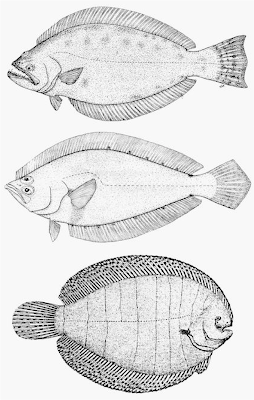One of the biggest stories in marine conservation in Australia this year is the announcement that 2.3 million square kilometers of Australian waters will receive some form of protection in marine reserves. About a third, or 800 thousand square kilometers will be fully protected as Marine National Parks. This new announcement takes the total area protected by the Federal Government to 3.1 million square kilometers. Which is all cause for some optimism.
 |
| A map of the newly declared marine reserve network in Australia. Green denotes the areas which are fully protected as Marine National Parks. Yellow denotes 'special protection areas' which exclude commercial fishing, but allow recreational fishing. Dark blue denotes 'special purpose zones', which allow only some forms of commercial fishing. Light blue denotes 'multiple use zones', which only prevent the most destructive commercial fishing practices. The grey areas in the south-east are the bits of the reserve network that were established in 2007. If you would like a PDF of the map, and other information go here. |
The largest contiguous protected area is the Coral Sea Marine Reserve, which adds to the already established Great Barrier Reef Marine Park. There was a storm of criticism when the Coral Sea Marine Reserve draft plan was released because many experts believed that it did not go far enough to protect the reef. In a rare win for the environment, the Australian Government extended the boundaries in the final plan.
 |
| A map of the Coral Sea Marine Reserve. Colours denote the same levels of protection as above. If you would like a PDF of the map, and other information go here. |
There is, however, still significant disquiet about the future of the Great Barrier Reef, which is estimated to have lost half of its coral cover in the last 50 years. A UNESCO mission to Australian in March strongly criticised the management of the reef and indicated that its listing as a World Heritage Area was at risk of being downgraded. Several of the threats that UNESCO identified will not be addressed by the new marine reserves.
The UNESCO mission identified climate change, catchment runoff, coastal development, ports and shipping, and fishing as the most pressing threats to the Great Barrier Reef World Heritage Area. Three of these (catchment runoff, coastal development and climate change), are due to activities outside the marine reserve and World Heritage Area. Moreover, the other activities will be allowed in at least some areas of the new marine reserve.
The cynic in me can't help also noticing two things. Firstly, that the bulk of the areas that receive full protection as marine national parks are generally those which are furthest offshore, where impacts are already low. And, secondly, that there will need to be enforcement of the new restrictions, but there is mention of additional funds to achieve this. Apparently, enforcing compliance will be achieved using existing infrastructure; infrastructure that is already used for other important activities.
Despite my slight cynicism, I think the new marine reserve network is excellent news for the conservation of the marine environment in Australia. But, the network doesn't address all of the threats to Australia's seas. And there are at least three state governments (Victoria, Queensland and Western Australia) that have ignored environmental threats and sought to erode existing protections. It would be incredibly embarrassing for Australia on the world stage and disastrous for Queensland's marine tourism industry if UNESCO were to downgrade the Great Barrier Reef World Heritage Area listing.
Further reading
For the UNESCO mission report go
here.
For the Great Barrier Reef Outlook Report, which sparked the UNESCO mission, go
here.
For an interesting expert commentary on the UNESCO report go
here.
UPDATE:
Just after posting this article I found
another article that is more hopeful that the protections granted by the new marine reserves will be adequately enforced. I think they can be too, but enforcement needs funding and I haven't seen those details yet.













